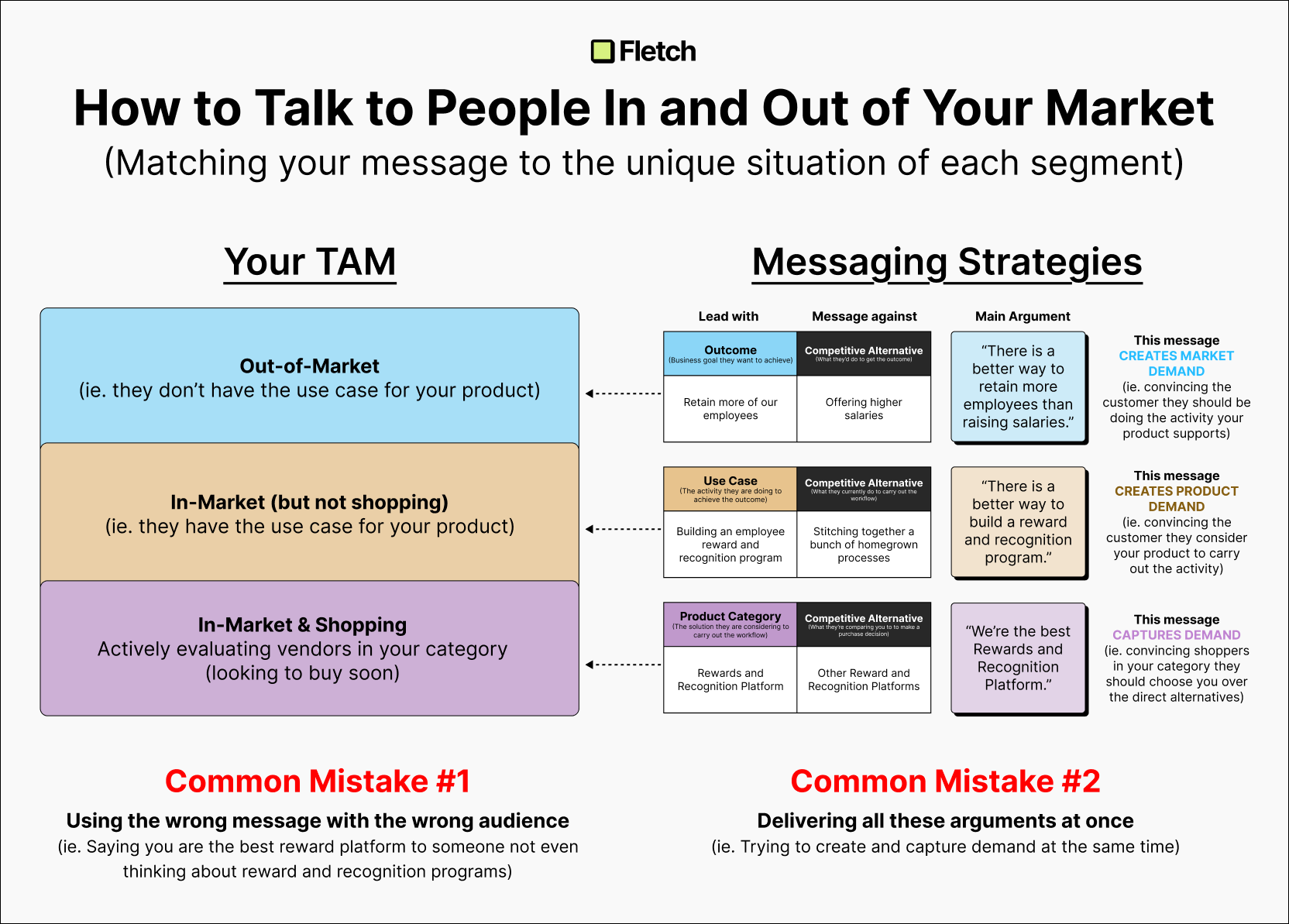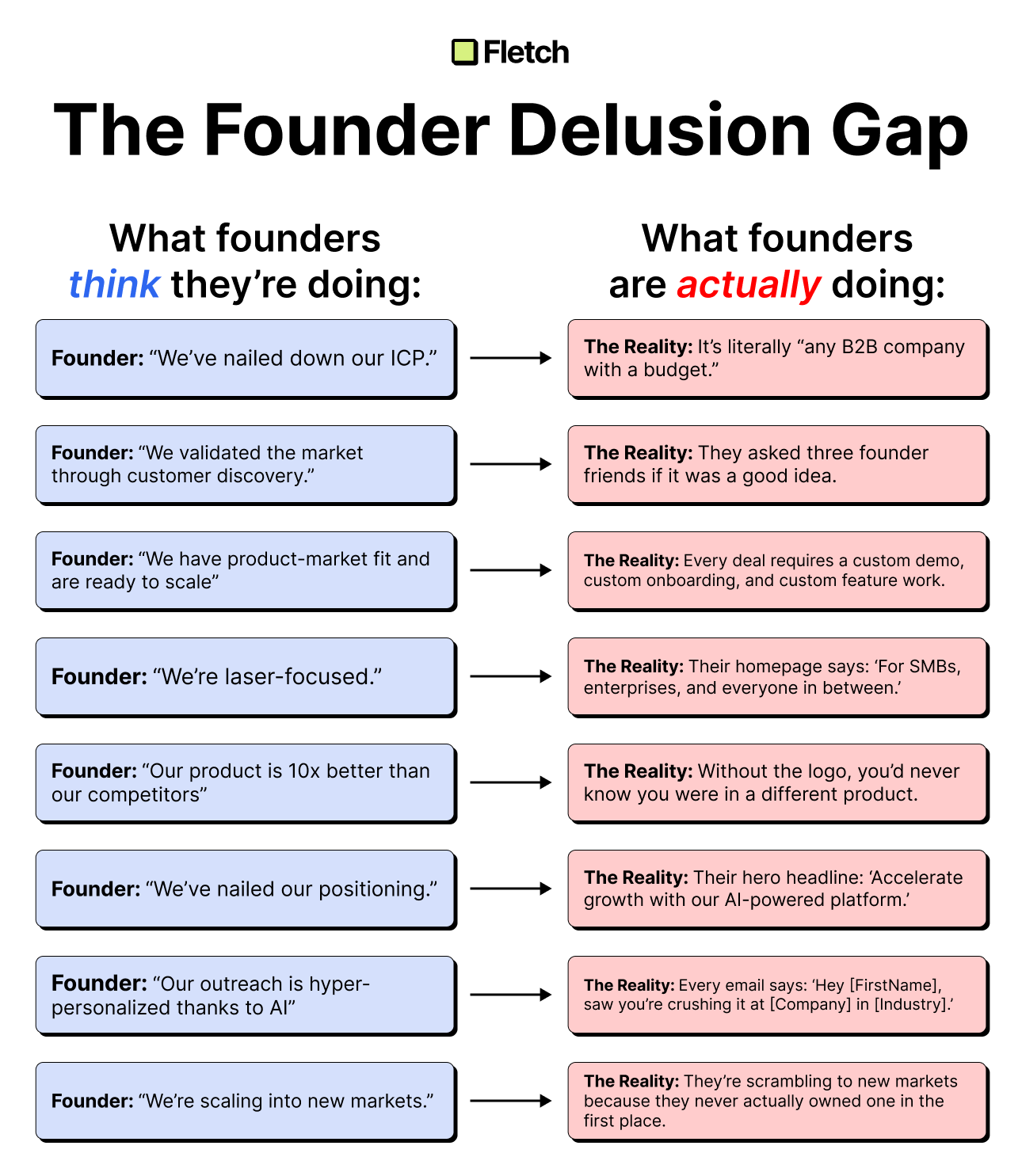Evaluating Positioning Anchors


"Lead with benefits!"
(hopefully this image shows why that is bad advice ❌)
👇🏻
If you're a newer startup like Surfe, what's the best way to explain what you do?
At Fletch PMM, we use what are called "positioning anchors":
🟨 Target Customer
↳ who you're targeting (mix of role, team, company type, industry, or context) and their particular context/goals
🟥 Problem
↳ the issues that arise from that specific context that create an opening for the product
🟧 Capability
↳ what you do with the product to solve the problem
🟩 Feature
↳ the technical aspects that make the capability possible
🟦 Benefit
↳the outcome of using the capability
🟪 Product Category
↳ what "shelf" your product lives on in the minds of your target customer
If you include all six of these, you get a comprehensive positioning statement.
But most early stage startups don't know ALL these aspects yet... if they did, they likely would have product market fit.
In this case, they need to choose 1-3 "positioning anchors" to create what we call Minimum Viable Positioning.
This "MVP" allows you to quickly explain what the product does using what you DO KNOW about your product/market while you still continue to test and determine the rest of the missing/incomplete elements of the positioning statement.
But depending on the product, not all positioning anchors will provide the same level of CLARITY.
Ideally, you want to lead with whichever anchor is the CLEAREST.
9 times out of 10, this is the main product capability.
Take Surfe
→ they get this and lead with their capability (the furthest hero to the right is their ACTUAL hero).
If you try leading with either the benefit or the problem, the message becomes significantly less clear.
Why?
↳ both the benefit and problem could apply to COUNTLESS products.
↳ TONS of products address that problem and TONS promise that exact benefit.
But the TRUE unique thing Surfe is doing is the HOW (i.e. the capability).
Check your website right now → my guess is you're probably leading with a benefit...
...and it's making it SUPER hard to understand what your product is/does and who it is for.

Ben Wilentz
Founder, Stealth Startup





